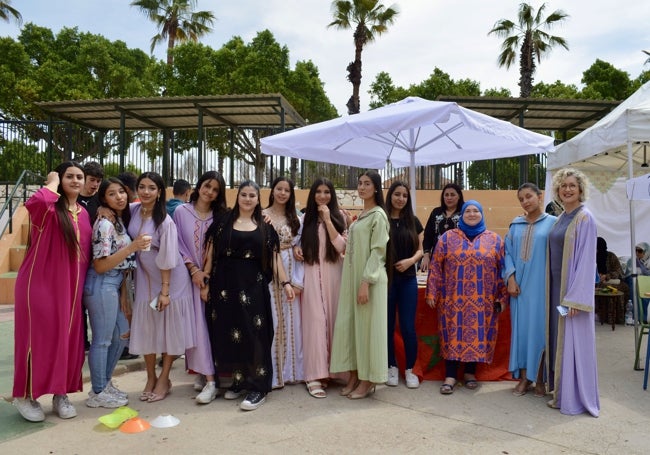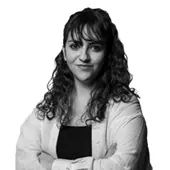The Coín school that is home to more than 20 nationalities
International ·
Montecillos secondary school organises a Feria de las Culturas, with traditional products from its pupils’ countries of originFrom outside the school building you can hear a mixture of sounds. In fact, just a few steps away, these noises are reminiscent of one of those fairs where different cultures intertwine in the same space. This takes the form of typical dishes, traditional games or riddles about well-kept secrets from each country. There are times when intuition does not fail and this is demonstrated every day at IES Los Montencillos secondary school in inland Coín, which educates more than 1,000 pupils of 22 different nationalities.
“Each teacher has taken charge of coordinating a country, choosing students from this country and this is how this initiative called Feria de las Culturas was created,” says the head teacher Conchi Navarro, who has arrived at the school wearing a purple djellaba - a garment traditionally worn in the Maghreb region of North Africa - blending in with the multicultural atmosphere from the very start.
Sofía Kovalska is 16 years old and from Ukraine. She arrived at the school five years ago when her mother decided to move to Coín. She had always advised her daughter to learn 30 Spanish words every day, for which Sofía is very grateful and remembers anecdotally. Displayed before her is a variety of typical Ukrainian products, such as smoked meats with cheese, empanadas with mashed potatoes and a soft drink called ‘kva taras’. Around the school different stands feature typical items from each country.
Diversity
“The aim of this initiative is to continue supporting diversity; it is very important that they understand that this is a space where there is room for everyone,” says English teacher Cameron Coello, who is one of the people in charge of the UK stand. At 14 years old, Cloe Brown is one of six English pupils studying at the school and her job is to explain what the foods on her stand are called. “At home we maintain the tradition of eating typical food from our country like this Yorkshire pudding, scones or sausage rolls,” she says, pointing to each dish.
On the other side of the sports centre where the multicultural fair is set up, Siggi, a 12-year-old pupil from Iceland, is holding a plate of ‘flatkökur’, one of her country’s traditional recipes that she usually cooks at home after a year and eight months of living in Coín. “I like this school because there is a lot of diversity and you meet a lot of children from all countries,” she says.
Every stand is decorated to represent a country and pupils have devised a challenge that acts as a preliminary step to tasting the different dishes. After a month of preparing for the fair in their spare time, without missing classes, as teacher Elena López stresses, the Feria de las Culturas provides a break from the normal school day, which is by no means boring. “I’ve been here all my life, but at home we keep Swedish customs, as we celebrate Christmas on 24th December and our food is usually Swedish too,” explains Emma Moreno, who is 13 years old and was born in Stockholm.

A tour of the fair’s different stalls takes you to France, Germany, China and Argentina, among many other destinations. “This is called bonobono, this is cremona, this is torta frita, alfajores de maicena and pasta flora,” explains Lucía Trentacossti, a 12 year old girl from Argentina, who says she is delighted with her life in Coín, although Christmases are usually hard because she “misses” her family.
The big party continues in the playground, where diversity is on display with different rainbows painted on the fountain and on the bench. In this space, henna stalls alternate with flamenco dancing, as the two biggest stands represent Morocco and Spain.
“We love Coín, but we maintain our customs with teatime and typical products from our countries thanks to the many Arab butchers and greengrocers in the town,” say Hajar Ben and Aya García. Opposite, the flamenco steps, rosquillos (deep-fried doughnuts) and hornazos (stuffed bread) typical of Coín bring together other students with Spanish flags, and foster the desire to continue crossing borders by strolling around the school where every day they take another step towards multicultural diversity.

